
31 August 2024

Render of RFA ONE (Image: Rocket Factory Augsburg)
The launch market has faced some rough patches recently. While 2024 was initially expected to be a year of debut launches, a series of failures and anomalies have cast a shadow over these expectations. One of the most striking incidents involved China's Space Pioneer, whose Tianlong-3 rocket was accidentally launched during what was supposed to be a static fire test. Even SpaceX hasn't been immune, with their reliable Falcon-9 rocket experiencing two separate launch anomalies.
In July, a Falcon-9 faced issues during the launch of 30 Starlink satellites into Low Earth Orbit (LEO) when a liquid oxygen leak compromised the mission. More recently, on August 28th, another Falcon booster failed during landing, with flames erupting from its base before it toppled over on the landing ship. Despite these setbacks, SpaceX remains renowned for its rugged reliability and reusability—key factors that have driven down launch costs and expanded access to space.
Germany’s Rocket Factory Augsburg (RFA) also faced a setback this week when they lost part of their RFA ONE small launch rocket during a static fire test at the SaxaVord launch site in Scotland. Originally scheduled for a debut launch this year, RFA has now postponed it to 2025, delaying what would have been the first-ever vertical launch from British soil. Despite this delay, Europe is poised for a surge in new rocket offerings, with Spain's PLD Space and Germany's HyImpulse already completing successful debut suborbital launches.
At the Farnborough Airshow in July, Orbex (UK) Chief Executive Phil Chambers announced plans to conduct the first launch of their Prime-1 rocket in spring next year from the Sutherland spaceport in Scotland. The Prime-1, dubbed a "microlauncher," is designed to serve the small satellite market, offering payload capacities of up to 180kg. Additionally, UK-based Skyrora is set to launch its XL rocket in 2025, further expanding the UK's presence in the small satellite launch sector.
In another boost for the European launch market, Norway's Andøya Spaceport has moved closer to hosting the first orbital launch for Isar Aerospace after receiving a government license. While delays and setbacks are to be expected as new launch technologies are developed, Europe remains optimistic about the upcoming wave of launchers that will contribute to achieving independent launch capabilities. In support of commercial space startups, the European Space Agency (ESA) announced last October that it would adopt a U.S.-style approach by purchasing launch services from the private sector rather than developing its own, signalling a significant shift in Europe's strategy for space access.

Illustration of Firefly's Blue Ghost (Image: Firefly Aerospace)
Next in line for Moon landings, Starship suggested for lunar habitats
2024 has already been a landmark year for lunar exploration. Japan made history in January by becoming the fourth nation to achieve a soft landing on the Moon with their SLIM lander. In a significant milestone for the private sector, U.S.-based Intuitive Machines became the first commercial entity to accomplish the same feat. Firefly Aerospace (US) is aiming to be next in line. They have sent their Blue Ghost lander to NASA's Jet Propulsion Laboratory for testing, with a launch planned for later this year.
Firefly is in line to be the third company to attempt a lunar landing as part of NASA’s Commercial Lunar Payload Services (CLPS) program, after Astrobotic and Intuitive Machines, signalling the new age of commercialisation of lunar exploration.
Commercialisation, or “New Space,” refers to the trend of private sector involvement in space exploration, ushering in a new era of cost-effective service procurement and is seen as a key strategy for the U.S. to maintain its lead in space exploration. New Space is also attracting traditionally non-space companies into the industry. For example, Nokia recently announced a partnership with Axiom Space to provide high-speed communications for the Artemis spacesuits that Axiom is developing. Nokia is also developing an LTE/4G communications system, dubbed a “network in a box,” for the Moon, which is set to launch with the second Intuitive Machines mission, possibly before the end of the year.
Developing infrastructure for the Moon is gaining momentum, particularly with initiatives like the U.S. Defense Advanced Research Projects Agency’s (DARPA) Luna-10, announced in October last year. This initiative invites companies to explore the construction of a scalable commercial lunar economy over the next decade.
A key piece of technology required to enable this future is SpaceX’s Starship launch vehicle, which is currently preparing for its fourth launch test in the coming weeks. In addition to providing heavy launch capabilities, a version of Starship will be used to deliver U.S. astronauts to the surface of the Moon as part of NASA’s Artemis III mission, anticipated in 2026. Furthermore, SpaceX has suggested that Starship could be utilised to create habitats on the Moon, with Elon Musk recently mentioning that a series of Starships could be used to build a “Moon Base Alpha.”
China advance lunar resource tech, Starpath Robotics gain funding
A key element of developing lunar infrastructure is finding the means to utilise lunar resources, such as water, metals, and to potentially export resources such as rare earths and helium-3.
Last Sunday, the South China Morning Post reported that Chinese scientists are planning to build an $18.2 billion magnetic space device designed to transport resources back to Earth in an effort to address the planet’s energy crisis. This launcher would be used to retrieve helium-3, a fuel that could potentially be used in future fusion reactors to help meet humanity’s energy needs. Researchers indicate that just 20 tons of helium-3 could power China for a year.
However, before addressing the energy needs, the primary resource for enabling long-term lunar exploration is water, which is essential for both human consumption and rocket fuel production. This week, Chinese scientists announced a breakthrough in extracting large quantities of water from lunar soil. They developed a new process based on tests of lunar rock samples retrieved during the Chang’e-5 mission in 2020. The method involves heating the regolith to produce water vapour. Using this approach, approximately 51 to 76 kilograms of water can be extracted from one ton of lunar soil, which could meet the daily drinking needs of 50 people.
U.S. startup Starpath Robotics is also focusing on lunar water extraction and recently announced the closing of a $12 million seed round. Starpath plans to deploy a fleet of mining robots to collect regolith and transport it to refinery plants, where it will be processed and stored. The company aims to have its technology ready for launch aboard a SpaceX Starship by 2026.
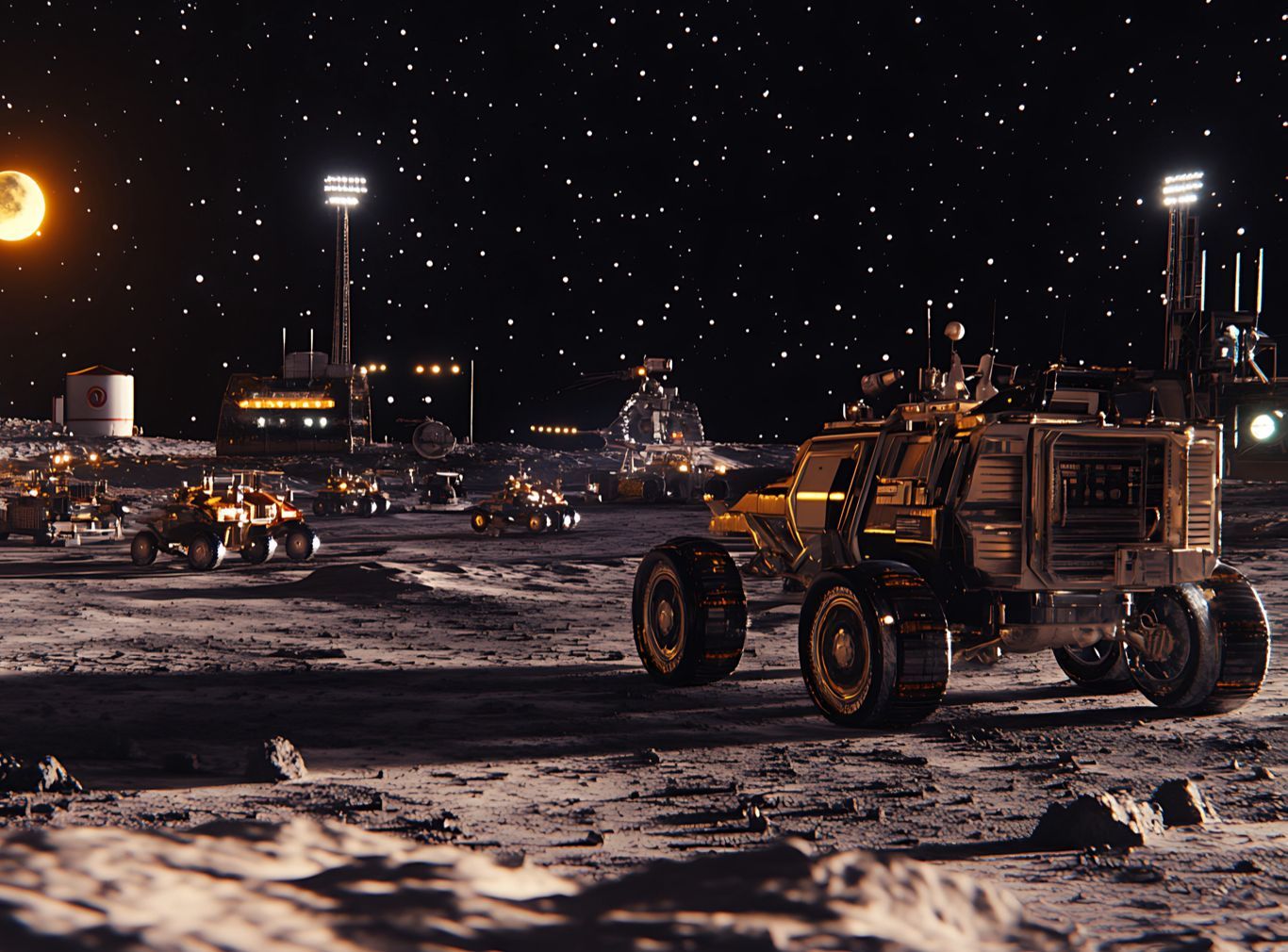
(Image: Adobe)
Resource mining and the Common Heritage of Mankind
It isn’t only on the Moon, but on other celestial bodies such as Mars and asteroids. AstroForge, a US asteroid mining startup, this week provided details of their third mission, due to launch in 2025 with Intuitive Machines.
Their vehicle, named Vestri, will target a near-Earth asteroid to assess its elemental composition and quantity. AstroForge's first vehicle, Brokkr-1, was launched in April last year to demonstrate in-orbit capabilities. Their second mission, featuring the Odin vehicle, is planned to launch with Intuitive Machines on the IM-2 mission later this year. Odin will rendezvous with an M-type asteroid, believed to contain substantial quantities of metals.
While excitement may be building surrounding the nearing possibility of mining the Moon, there are still big questions that remain unanswered regarding the use and ownership of such resources. International law remains ambiguous on the matter, with just the UN Moon Agreement directly addressing the issue, declaring lunar resources as the Common Heritage of Mankind (CHM). However, only 18 nations are signed-up to the Moon Agreement.
An article this week from the Australian Institute of International Affairs discussed the reemergence of the Common Heritage of Mankind (CHM) concept. It noted that while CHM offers some reassurance to developing nations—suggesting they will be entitled to a share of the benefits if resources are extracted—there remains a lack of strong international consensus on the issue. This raises the question of how resources can be utilised fairly given the current ambiguities and disagreements at the international level.
ATLAC, international frameworks and the urgency for grassroots cooperation
Other international efforts are underway to promote partnerships and resource utilisation on celestial bodies like the Moon. These include the U.S. Artemis Accords and various national laws. However, achieving true universal agreement remains challenging, particularly given the geopolitical tensions among major players such as the U.S., China, and Russia.
In June, the UN Committee on the Peaceful Uses of Outer Space (COPUOS) agreed to adopt the new Action Team on Lunar Resources Consultation (ATLAC) initiative. This initiative is designed to build a consultative mechanism within the UN to address issues such as safety, interoperability, sustainability, and resource management. COPUOS has since released the draft mandate for ATLAC, which will allow member states and observers to participate and aims to be operational by 2027 or 2028.
ATLAC represents a significant step in the right direction, potentially facilitating more dialogue among nations and suggesting an “international mechanism” that could involve representatives from other stakeholders, such as industry and the general public. A working plan for ATLAC is scheduled to be presented to COPUOS at their next meeting in June 2025.
However, a UN-level system may not fully address a key stumbling block: the geopolitical and economic rivalry, particularly between the U.S. and China, which erodes trust and heightens tensions. Therefore, efforts will need to be expanded to rebuild trust among all parties involved.
One promising area for fostering cooperation among all stakeholders is sustainability and debris mitigation in both lunar and Earth orbit environments. With an estimated 30,000 or more pieces of large debris in orbit, it is crucial to service and maintain space to ensure safe and effective operations for everyone. This focus on debris management could serve as a foundation for building cooperative relationships.
Another area could be in sourcing solar energy from space, in order to tackle our energy needs. Daniel Kammen, a professor of energy at the University of California, Berkeley, said that both the US and China could challenge each other on the development of space-based solar power, which would involve harvesting the energy in-orbit, before beaming it wirelessly back to Earth.
As resource extraction and utilisation advance rapidly, exploring additional initiatives to foster collaboration is becoming increasingly crucial. With sustainability prominently on the global agenda, it may also offer added opportunities for strengthening cooperation.

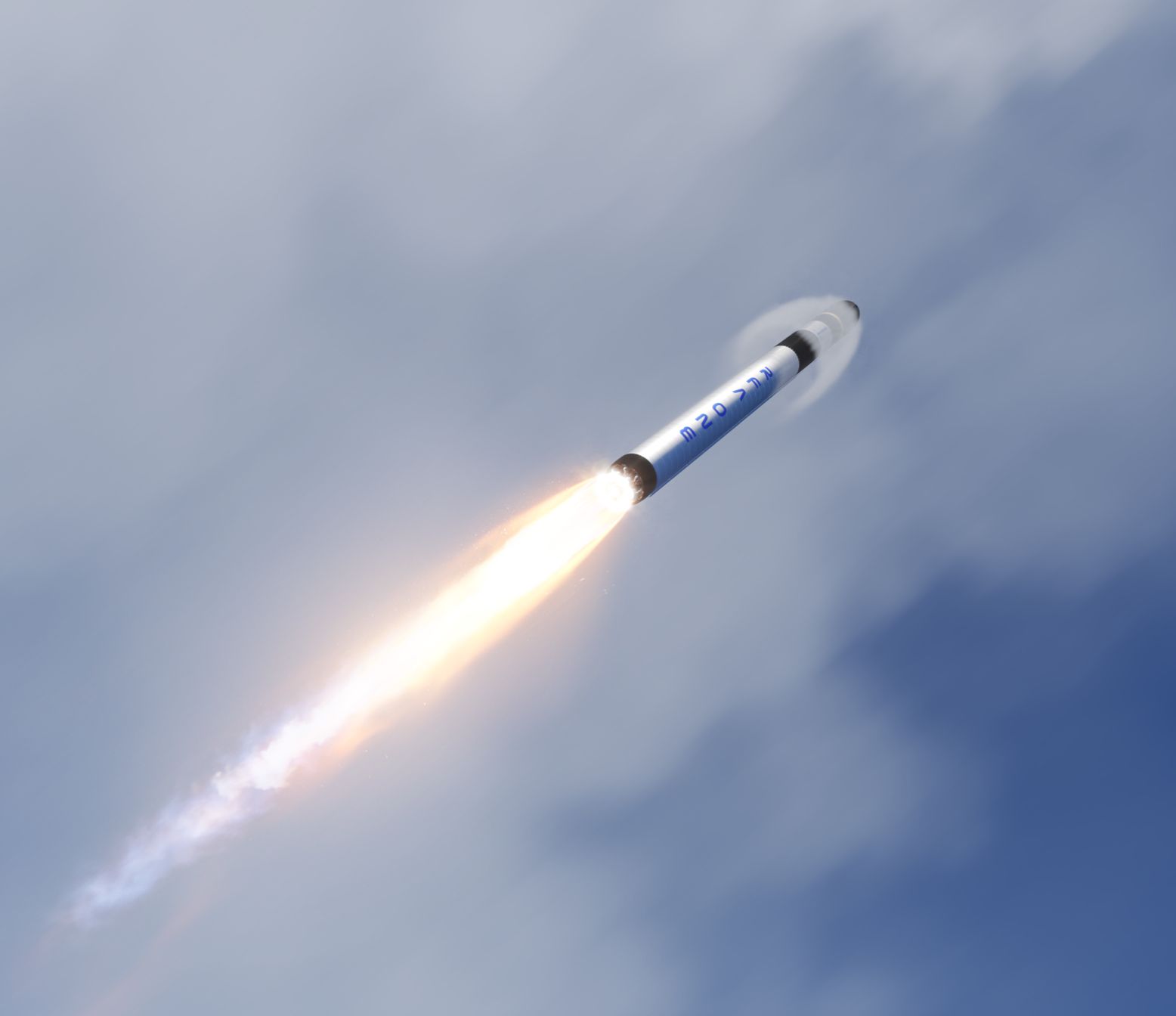
Render of RFA ONE (Image: Rocket Factory Augsburg)
31 August 2024
Spacelaunch updates, Nokia developing lunar connectivity, space resource utilisation and the question of the common heritage of humankind - Space News Roundup

The launch market has faced some rough patches recently. While 2024 was initially expected to be a year of debut launches, a series of failures and anomalies have cast a shadow over these expectations. One of the most striking incidents involved China's Space Pioneer, whose Tianlong-3 rocket was accidentally launched during what was supposed to be a static fire test. Even SpaceX hasn't been immune, with their reliable Falcon-9 rocket experiencing two separate launch anomalies.
In July, a Falcon-9 faced issues during the launch of 30 Starlink satellites into Low Earth Orbit (LEO) when a liquid oxygen leak compromised the mission. More recently, on August 28th, another Falcon booster failed during landing, with flames erupting from its base before it toppled over on the landing ship. Despite these setbacks, SpaceX remains renowned for its rugged reliability and reusability—key factors that have driven down launch costs and expanded access to space.
Germany’s Rocket Factory Augsburg (RFA) also faced a setback this week when they lost part of their RFA ONE small launch rocket during a static fire test at the SaxaVord launch site in Scotland. Originally scheduled for a debut launch this year, RFA has now postponed it to 2025, delaying what would have been the first-ever vertical launch from British soil. Despite this delay, Europe is poised for a surge in new rocket offerings, with Spain's PLD Space and Germany's HyImpulse already completing successful debut suborbital launches.
At the Farnborough Airshow in July, Orbex (UK) Chief Executive Phil Chambers announced plans to conduct the first launch of their Prime-1 rocket in spring next year from the Sutherland spaceport in Scotland. The Prime-1, dubbed a "microlauncher," is designed to serve the small satellite market, offering payload capacities of up to 180kg. Additionally, UK-based Skyrora is set to launch its XL rocket in 2025, further expanding the UK's presence in the small satellite launch sector.
In another boost for the European launch market, Norway's Andøya Spaceport has moved closer to hosting the first orbital launch for Isar Aerospace after receiving a government license. While delays and setbacks are to be expected as new launch technologies are developed, Europe remains optimistic about the upcoming wave of launchers that will contribute to achieving independent launch capabilities. In support of commercial space startups, the European Space Agency (ESA) announced last October that it would adopt a U.S.-style approach by purchasing launch services from the private sector rather than developing its own, signalling a significant shift in Europe's strategy for space access.
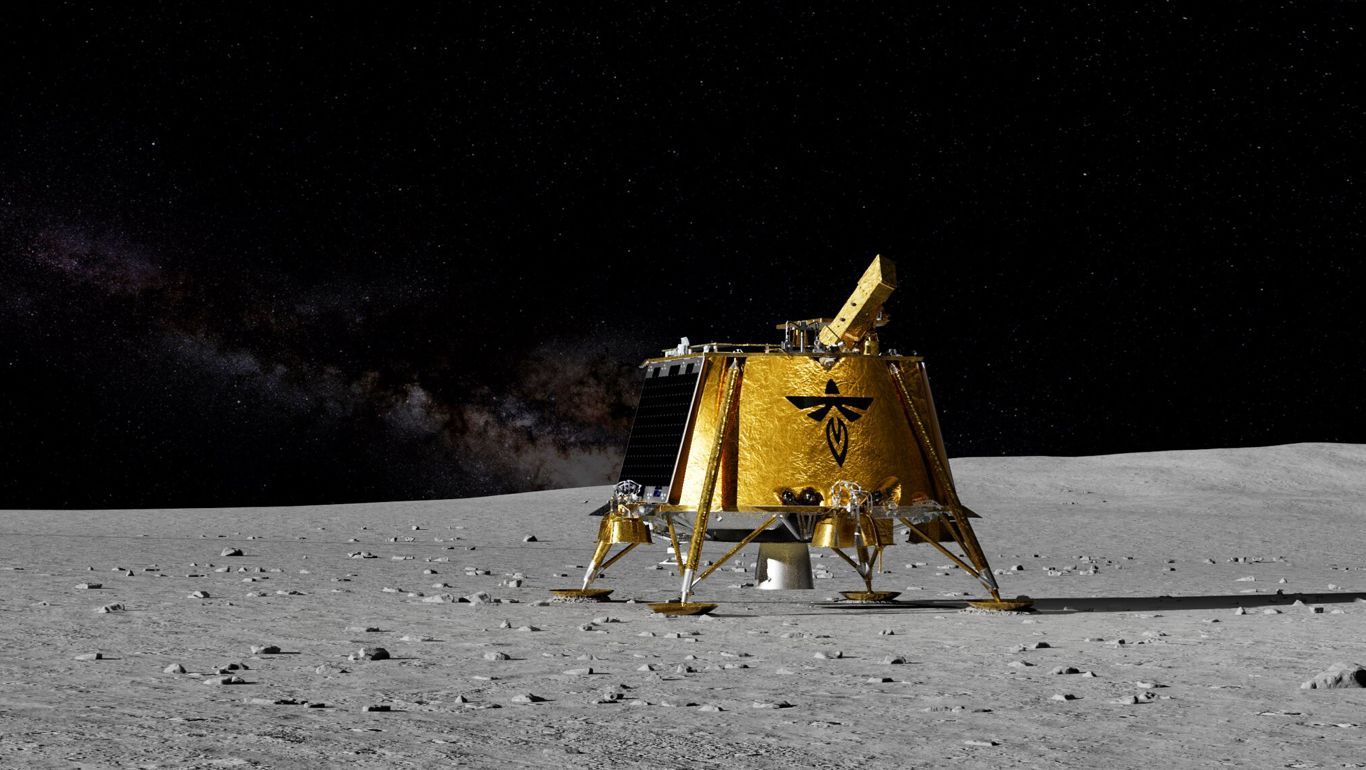
Illustration of Firefly's Blue Ghost (Image: Firefly Aerospace)
Next in line for Moon landings, Starship suggested for lunar habitats
2024 has already been a landmark year for lunar exploration. Japan made history in January by becoming the fourth nation to achieve a soft landing on the Moon with their SLIM lander. In a significant milestone for the private sector, U.S.-based Intuitive Machines became the first commercial entity to accomplish the same feat. Firefly Aerospace (US) is aiming to be next in line. They have sent their Blue Ghost lander to NASA's Jet Propulsion Laboratory for testing, with a launch planned for later this year.
Firefly is in line to be the third company to attempt a lunar landing as part of NASA’s Commercial Lunar Payload Services (CLPS) program, after Astrobotic and Intuitive Machines, signalling the new age of commercialisation of lunar exploration.
Commercialisation, or “New Space,” refers to the trend of private sector involvement in space exploration, ushering in a new era of cost-effective service procurement and is seen as a key strategy for the U.S. to maintain its lead in space exploration. New Space is also attracting traditionally non-space companies into the industry. For example, Nokia recently announced a partnership with Axiom Space to provide high-speed communications for the Artemis spacesuits that Axiom is developing. Nokia is also developing an LTE/4G communications system, dubbed a “network in a box,” for the Moon, which is set to launch with the second Intuitive Machines mission, possibly before the end of the year.
Developing infrastructure for the Moon is gaining momentum, particularly with initiatives like the U.S. Defense Advanced Research Projects Agency’s (DARPA) Luna-10, announced in October last year. This initiative invites companies to explore the construction of a scalable commercial lunar economy over the next decade.
A key piece of technology required to enable this future is SpaceX’s Starship launch vehicle, which is currently preparing for its fourth launch test in the coming weeks. In addition to providing heavy launch capabilities, a version of Starship will be used to deliver U.S. astronauts to the surface of the Moon as part of NASA’s Artemis III mission, anticipated in 2026. Furthermore, SpaceX has suggested that Starship could be utilised to create habitats on the Moon, with Elon Musk recently mentioning that a series of Starships could be used to build a “Moon Base Alpha.”
China advance lunar resource tech, Starpath Robotics gain funding
A key element of developing lunar infrastructure is finding the means to utilise lunar resources, such as water, metals, and to potentially export resources such as rare earths and helium-3.
Last Sunday, the South China Morning Post reported that Chinese scientists are planning to build an $18.2 billion magnetic space device designed to transport resources back to Earth in an effort to address the planet’s energy crisis. This launcher would be used to retrieve helium-3, a fuel that could potentially be used in future fusion reactors to help meet humanity’s energy needs. Researchers indicate that just 20 tons of helium-3 could power China for a year.
However, before addressing the energy needs, the primary resource for enabling long-term lunar exploration is water, which is essential for both human consumption and rocket fuel production. This week, Chinese scientists announced a breakthrough in extracting large quantities of water from lunar soil. They developed a new process based on tests of lunar rock samples retrieved during the Chang’e-5 mission in 2020. The method involves heating the regolith to produce water vapour. Using this approach, approximately 51 to 76 kilograms of water can be extracted from one ton of lunar soil, which could meet the daily drinking needs of 50 people.
U.S. startup Starpath Robotics is also focusing on lunar water extraction and recently announced the closing of a $12 million seed round. Starpath plans to deploy a fleet of mining robots to collect regolith and transport it to refinery plants, where it will be processed and stored. The company aims to have its technology ready for launch aboard a SpaceX Starship by 2026.
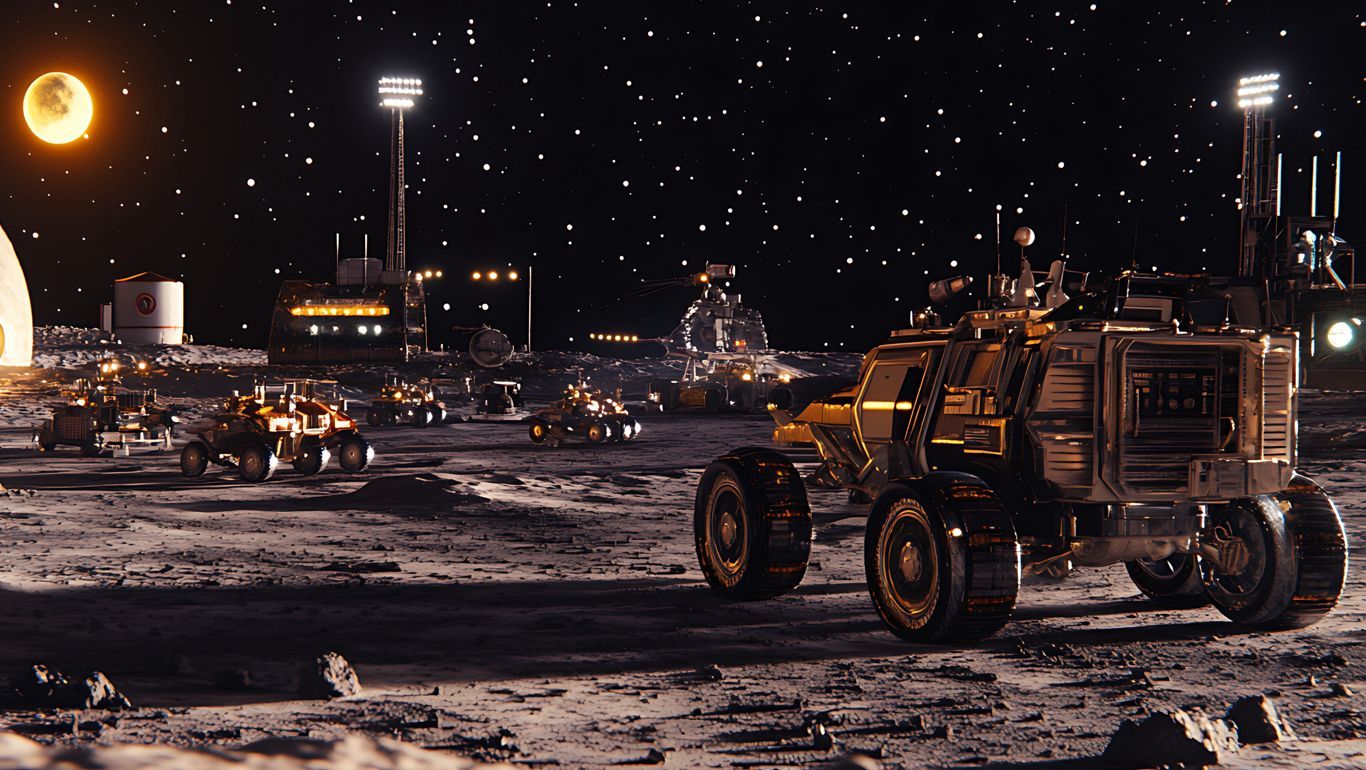
(Image: Adobe)
Resource mining and the Common Heritage of Mankind
It isn’t only on the Moon, but on other celestial bodies such as Mars and asteroids. AstroForge, a US asteroid mining startup, this week provided details of their third mission, due to launch in 2025 with Intuitive Machines.
Their vehicle, named Vestri, will target a near-Earth asteroid to assess its elemental composition and quantity. AstroForge's first vehicle, Brokkr-1, was launched in April last year to demonstrate in-orbit capabilities. Their second mission, featuring the Odin vehicle, is planned to launch with Intuitive Machines on the IM-2 mission later this year. Odin will rendezvous with an M-type asteroid, believed to contain substantial quantities of metals.
While excitement may be building surrounding the nearing possibility of mining the Moon, there are still big questions that remain unanswered regarding the use and ownership of such resources. International law remains ambiguous on the matter, with just the UN Moon Agreement directly addressing the issue, declaring lunar resources as the Common Heritage of Mankind (CHM). However, only 18 nations are signed-up to the Moon Agreement.
An article this week from the Australian Institute of International Affairs discussed the reemergence of the Common Heritage of Mankind (CHM) concept. It noted that while CHM offers some reassurance to developing nations—suggesting they will be entitled to a share of the benefits if resources are extracted—there remains a lack of strong international consensus on the issue. This raises the question of how resources can be utilised fairly given the current ambiguities and disagreements at the international level.
ATLAC, international frameworks and the urgency for grassroots cooperation
Other international efforts are underway to promote partnerships and resource utilisation on celestial bodies like the Moon. These include the U.S. Artemis Accords and various national laws. However, achieving true universal agreement remains challenging, particularly given the geopolitical tensions among major players such as the U.S., China, and Russia.
In June, the UN Committee on the Peaceful Uses of Outer Space (COPUOS) agreed to adopt the new Action Team on Lunar Resources Consultation (ATLAC) initiative. This initiative is designed to build a consultative mechanism within the UN to address issues such as safety, interoperability, sustainability, and resource management. COPUOS has since released the draft mandate for ATLAC, which will allow member states and observers to participate and aims to be operational by 2027 or 2028.
ATLAC represents a significant step in the right direction, potentially facilitating more dialogue among nations and suggesting an “international mechanism” that could involve representatives from other stakeholders, such as industry and the general public. A working plan for ATLAC is scheduled to be presented to COPUOS at their next meeting in June 2025.
However, a UN-level system may not fully address a key stumbling block: the geopolitical and economic rivalry, particularly between the U.S. and China, which erodes trust and heightens tensions. Therefore, efforts will need to be expanded to rebuild trust among all parties involved.
One promising area for fostering cooperation among all stakeholders is sustainability and debris mitigation in both lunar and Earth orbit environments. With an estimated 30,000 or more pieces of large debris in orbit, it is crucial to service and maintain space to ensure safe and effective operations for everyone. This focus on debris management could serve as a foundation for building cooperative relationships.
Another area could be in sourcing solar energy from space, in order to tackle our energy needs. Daniel Kammen, a professor of energy at the University of California, Berkeley, said that both the US and China could challenge each other on the development of space-based solar power, which would involve harvesting the energy in-orbit, before beaming it wirelessly back to Earth.
As resource extraction and utilisation advance rapidly, exploring additional initiatives to foster collaboration is becoming increasingly crucial. With sustainability prominently on the global agenda, it may also offer added opportunities for strengthening cooperation.
Share this article


31 August 2024
Spacelaunch updates, Nokia developing lunar connectivity, space resource utilisation and the question of the common heritage of humankind - Space News Roundup

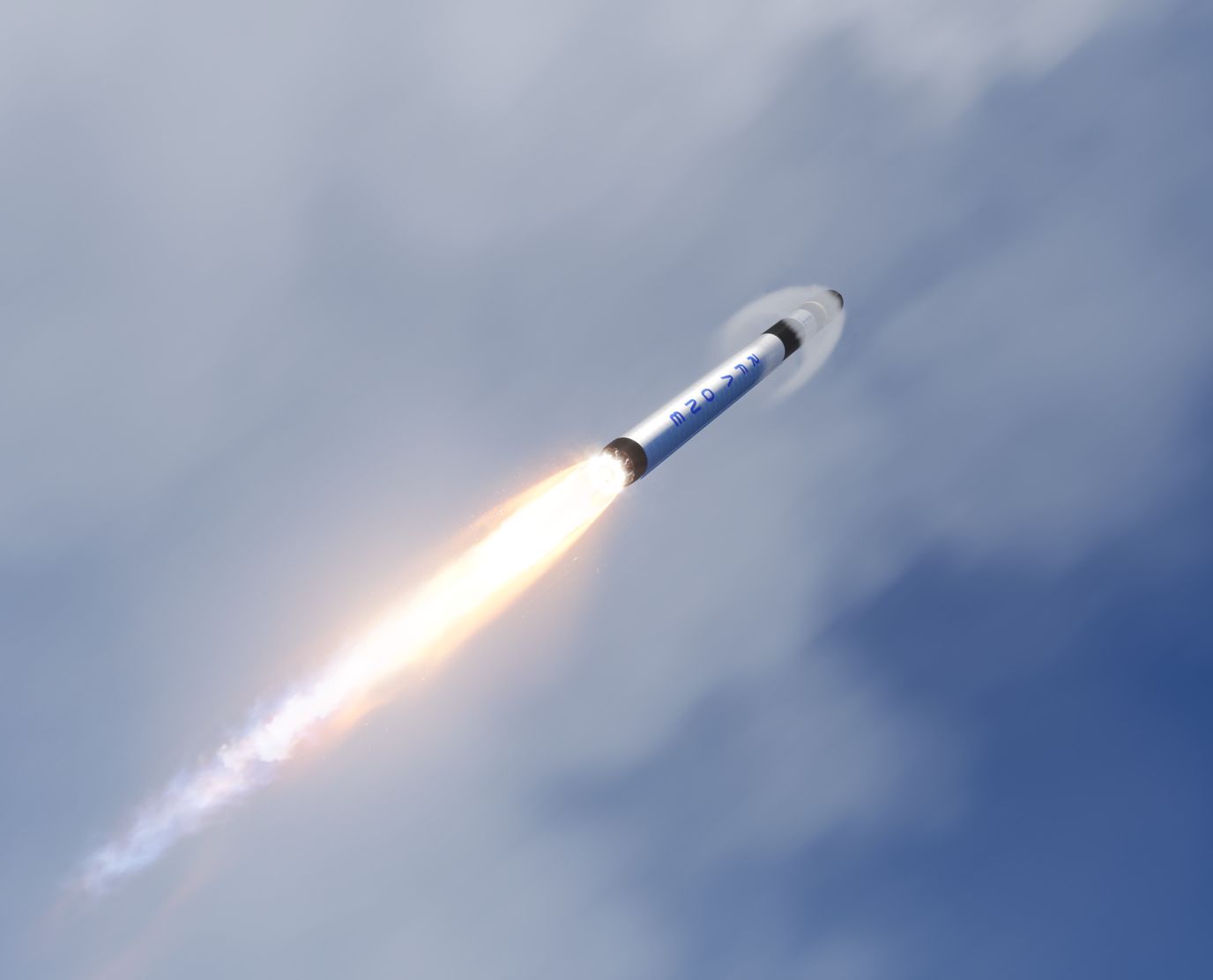
Render of RFA ONE (Image: Rocket Factory Augsburg)
The launch market has faced some rough patches recently. While 2024 was initially expected to be a year of debut launches, a series of failures and anomalies have cast a shadow over these expectations. One of the most striking incidents involved China's Space Pioneer, whose Tianlong-3 rocket was accidentally launched during what was supposed to be a static fire test. Even SpaceX hasn't been immune, with their reliable Falcon-9 rocket experiencing two separate launch anomalies.
In July, a Falcon-9 faced issues during the launch of 30 Starlink satellites into Low Earth Orbit (LEO) when a liquid oxygen leak compromised the mission. More recently, on August 28th, another Falcon booster failed during landing, with flames erupting from its base before it toppled over on the landing ship. Despite these setbacks, SpaceX remains renowned for its rugged reliability and reusability—key factors that have driven down launch costs and expanded access to space.
Germany’s Rocket Factory Augsburg (RFA) also faced a setback this week when they lost part of their RFA ONE small launch rocket during a static fire test at the SaxaVord launch site in Scotland. Originally scheduled for a debut launch this year, RFA has now postponed it to 2025, delaying what would have been the first-ever vertical launch from British soil. Despite this delay, Europe is poised for a surge in new rocket offerings, with Spain's PLD Space and Germany's HyImpulse already completing successful debut suborbital launches.
At the Farnborough Airshow in July, Orbex (UK) Chief Executive Phil Chambers announced plans to conduct the first launch of their Prime-1 rocket in spring next year from the Sutherland spaceport in Scotland. The Prime-1, dubbed a "microlauncher," is designed to serve the small satellite market, offering payload capacities of up to 180kg. Additionally, UK-based Skyrora is set to launch its XL rocket in 2025, further expanding the UK's presence in the small satellite launch sector.
In another boost for the European launch market, Norway's Andøya Spaceport has moved closer to hosting the first orbital launch for Isar Aerospace after receiving a government license. While delays and setbacks are to be expected as new launch technologies are developed, Europe remains optimistic about the upcoming wave of launchers that will contribute to achieving independent launch capabilities. In support of commercial space startups, the European Space Agency (ESA) announced last October that it would adopt a U.S.-style approach by purchasing launch services from the private sector rather than developing its own, signalling a significant shift in Europe's strategy for space access.
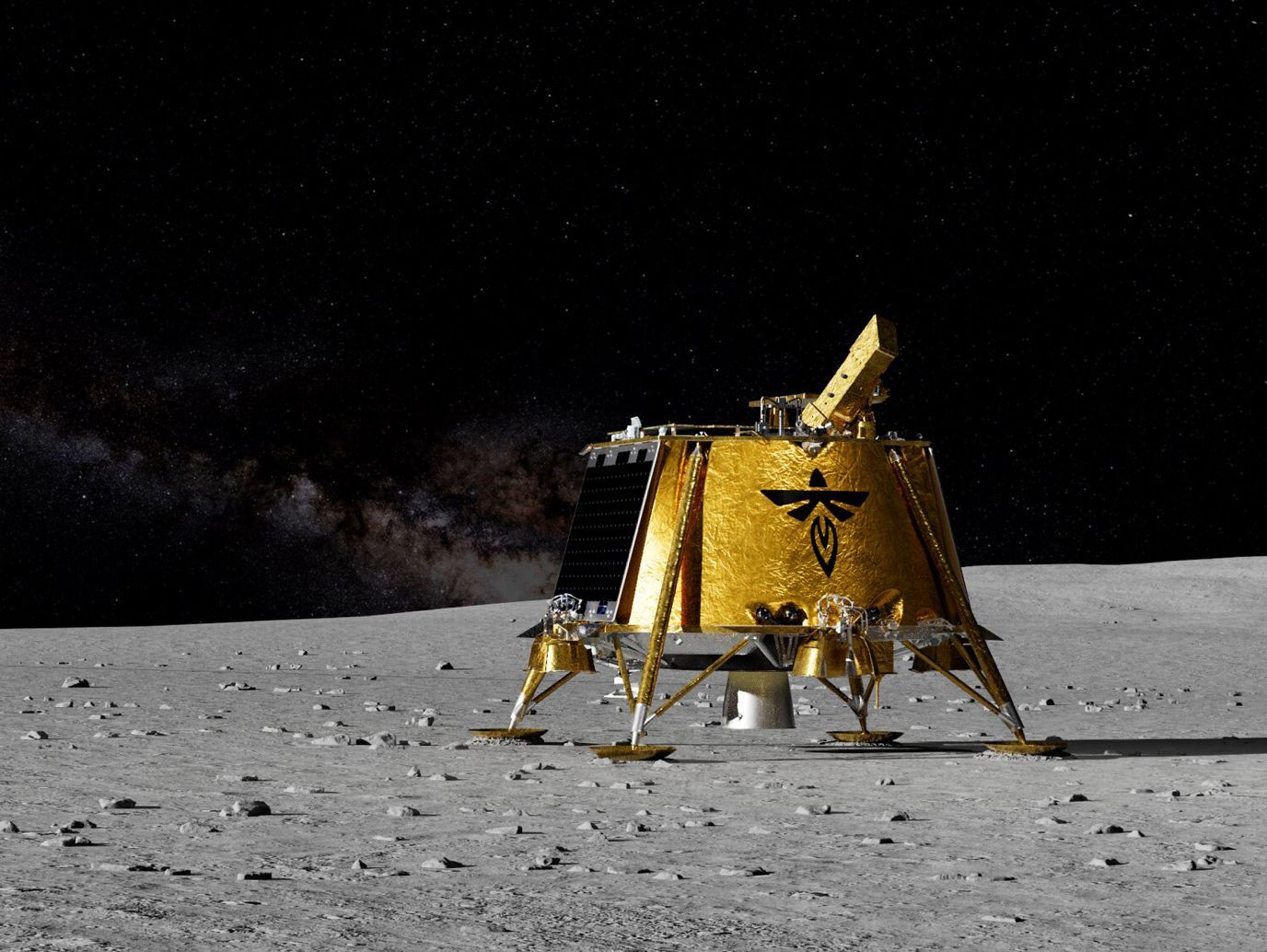
Illustration of Firefly's Blue Ghost (Image: Firefly Aerospace)
Next in line for Moon landings, Starship suggested for lunar habitats
2024 has already been a landmark year for lunar exploration. Japan made history in January by becoming the fourth nation to achieve a soft landing on the Moon with their SLIM lander. In a significant milestone for the private sector, U.S.-based Intuitive Machines became the first commercial entity to accomplish the same feat. Firefly Aerospace (US) is aiming to be next in line. They have sent their Blue Ghost lander to NASA's Jet Propulsion Laboratory for testing, with a launch planned for later this year.
Firefly is in line to be the third company to attempt a lunar landing as part of NASA’s Commercial Lunar Payload Services (CLPS) program, after Astrobotic and Intuitive Machines, signalling the new age of commercialisation of lunar exploration.
Commercialisation, or “New Space,” refers to the trend of private sector involvement in space exploration, ushering in a new era of cost-effective service procurement and is seen as a key strategy for the U.S. to maintain its lead in space exploration. New Space is also attracting traditionally non-space companies into the industry. For example, Nokia recently announced a partnership with Axiom Space to provide high-speed communications for the Artemis spacesuits that Axiom is developing. Nokia is also developing an LTE/4G communications system, dubbed a “network in a box,” for the Moon, which is set to launch with the second Intuitive Machines mission, possibly before the end of the year.
Developing infrastructure for the Moon is gaining momentum, particularly with initiatives like the U.S. Defense Advanced Research Projects Agency’s (DARPA) Luna-10, announced in October last year. This initiative invites companies to explore the construction of a scalable commercial lunar economy over the next decade.
A key piece of technology required to enable this future is SpaceX’s Starship launch vehicle, which is currently preparing for its fourth launch test in the coming weeks. In addition to providing heavy launch capabilities, a version of Starship will be used to deliver U.S. astronauts to the surface of the Moon as part of NASA’s Artemis III mission, anticipated in 2026. Furthermore, SpaceX has suggested that Starship could be utilised to create habitats on the Moon, with Elon Musk recently mentioning that a series of Starships could be used to build a “Moon Base Alpha.”
China advance lunar resource tech, Starpath Robotics gain funding
A key element of developing lunar infrastructure is finding the means to utilise lunar resources, such as water, metals, and to potentially export resources such as rare earths and helium-3.
Last Sunday, the South China Morning Post reported that Chinese scientists are planning to build an $18.2 billion magnetic space device designed to transport resources back to Earth in an effort to address the planet’s energy crisis. This launcher would be used to retrieve helium-3, a fuel that could potentially be used in future fusion reactors to help meet humanity’s energy needs. Researchers indicate that just 20 tons of helium-3 could power China for a year.
However, before addressing the energy needs, the primary resource for enabling long-term lunar exploration is water, which is essential for both human consumption and rocket fuel production. This week, Chinese scientists announced a breakthrough in extracting large quantities of water from lunar soil. They developed a new process based on tests of lunar rock samples retrieved during the Chang’e-5 mission in 2020. The method involves heating the regolith to produce water vapour. Using this approach, approximately 51 to 76 kilograms of water can be extracted from one ton of lunar soil, which could meet the daily drinking needs of 50 people.
U.S. startup Starpath Robotics is also focusing on lunar water extraction and recently announced the closing of a $12 million seed round. Starpath plans to deploy a fleet of mining robots to collect regolith and transport it to refinery plants, where it will be processed and stored. The company aims to have its technology ready for launch aboard a SpaceX Starship by 2026.
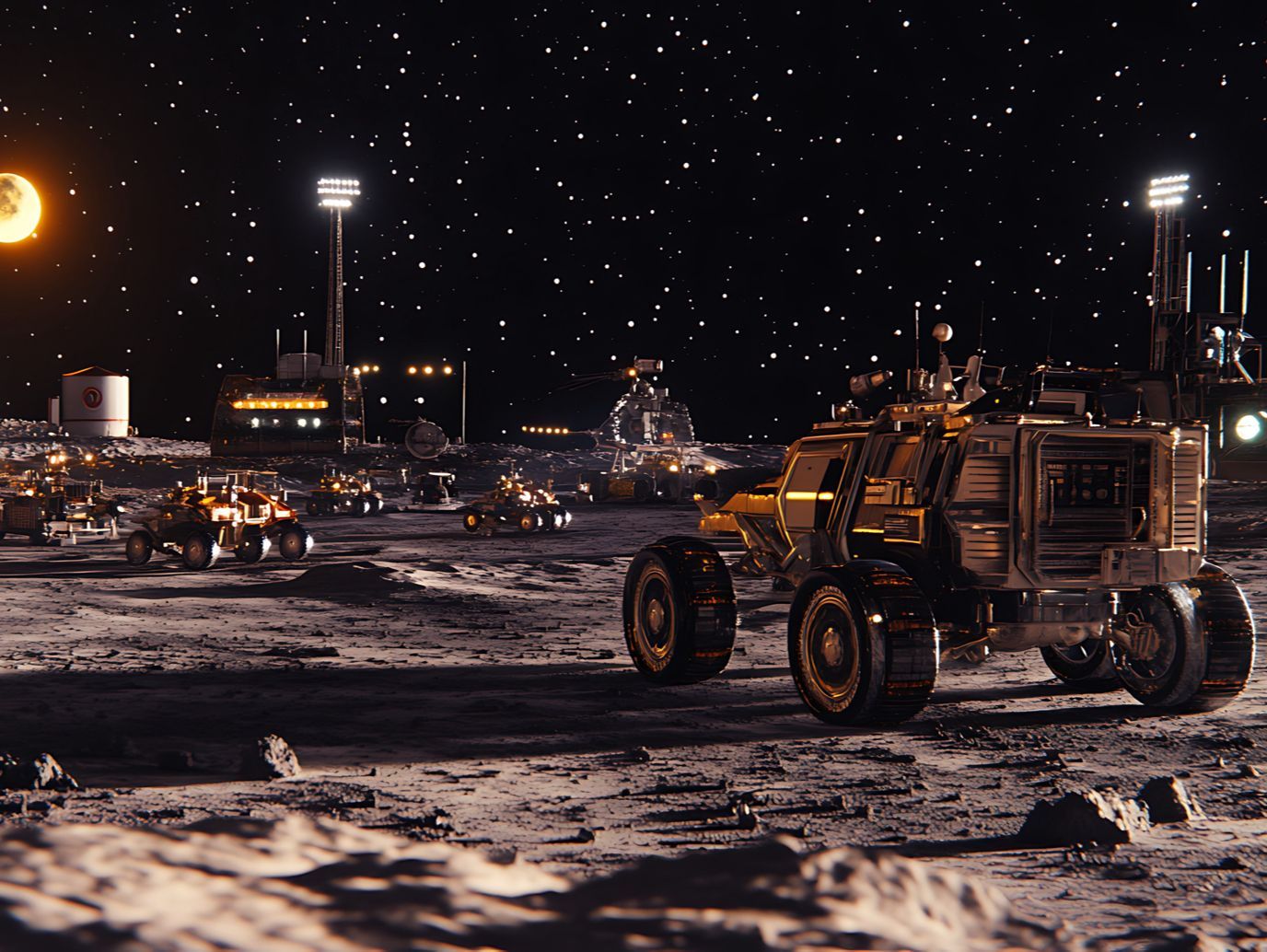
(Image: Adobe)
Resource mining and the Common Heritage of Mankind
It isn’t only on the Moon, but on other celestial bodies such as Mars and asteroids. AstroForge, a US asteroid mining startup, this week provided details of their third mission, due to launch in 2025 with Intuitive Machines.
Their vehicle, named Vestri, will target a near-Earth asteroid to assess its elemental composition and quantity. AstroForge's first vehicle, Brokkr-1, was launched in April last year to demonstrate in-orbit capabilities. Their second mission, featuring the Odin vehicle, is planned to launch with Intuitive Machines on the IM-2 mission later this year. Odin will rendezvous with an M-type asteroid, believed to contain substantial quantities of metals.
While excitement may be building surrounding the nearing possibility of mining the Moon, there are still big questions that remain unanswered regarding the use and ownership of such resources. International law remains ambiguous on the matter, with just the UN Moon Agreement directly addressing the issue, declaring lunar resources as the Common Heritage of Mankind (CHM). However, only 18 nations are signed-up to the Moon Agreement.
An article this week from the Australian Institute of International Affairs discussed the reemergence of the Common Heritage of Mankind (CHM) concept. It noted that while CHM offers some reassurance to developing nations—suggesting they will be entitled to a share of the benefits if resources are extracted—there remains a lack of strong international consensus on the issue. This raises the question of how resources can be utilised fairly given the current ambiguities and disagreements at the international level.
ATLAC, international frameworks and the urgency for grassroots cooperation
Other international efforts are underway to promote partnerships and resource utilisation on celestial bodies like the Moon. These include the U.S. Artemis Accords and various national laws. However, achieving true universal agreement remains challenging, particularly given the geopolitical tensions among major players such as the U.S., China, and Russia.
In June, the UN Committee on the Peaceful Uses of Outer Space (COPUOS) agreed to adopt the new Action Team on Lunar Resources Consultation (ATLAC) initiative. This initiative is designed to build a consultative mechanism within the UN to address issues such as safety, interoperability, sustainability, and resource management. COPUOS has since released the draft mandate for ATLAC, which will allow member states and observers to participate and aims to be operational by 2027 or 2028.
ATLAC represents a significant step in the right direction, potentially facilitating more dialogue among nations and suggesting an “international mechanism” that could involve representatives from other stakeholders, such as industry and the general public. A working plan for ATLAC is scheduled to be presented to COPUOS at their next meeting in June 2025.
However, a UN-level system may not fully address a key stumbling block: the geopolitical and economic rivalry, particularly between the U.S. and China, which erodes trust and heightens tensions. Therefore, efforts will need to be expanded to rebuild trust among all parties involved.
One promising area for fostering cooperation among all stakeholders is sustainability and debris mitigation in both lunar and Earth orbit environments. With an estimated 30,000 or more pieces of large debris in orbit, it is crucial to service and maintain space to ensure safe and effective operations for everyone. This focus on debris management could serve as a foundation for building cooperative relationships.
Another area could be in sourcing solar energy from space, in order to tackle our energy needs. Daniel Kammen, a professor of energy at the University of California, Berkeley, said that both the US and China could challenge each other on the development of space-based solar power, which would involve harvesting the energy in-orbit, before beaming it wirelessly back to Earth.
As resource extraction and utilisation advance rapidly, exploring additional initiatives to foster collaboration is becoming increasingly crucial. With sustainability prominently on the global agenda, it may also offer added opportunities for strengthening cooperation.
Share this article

